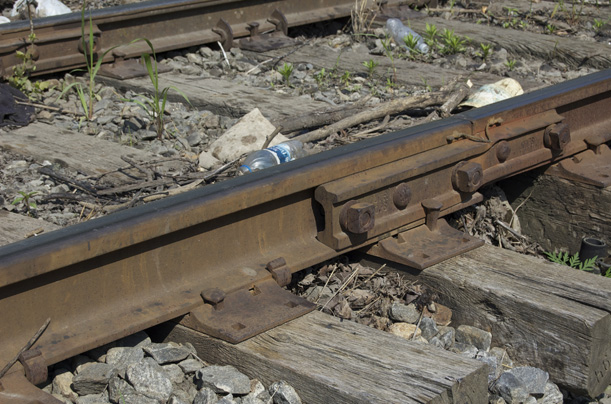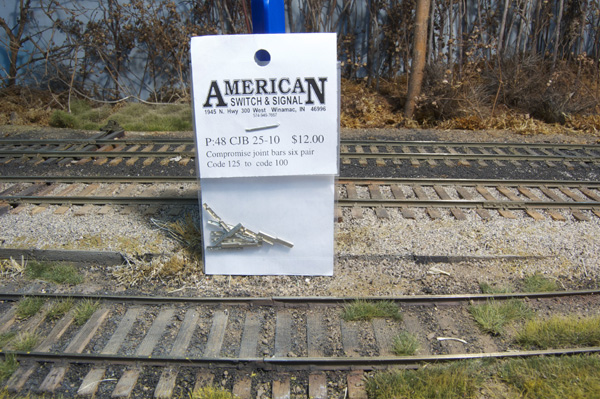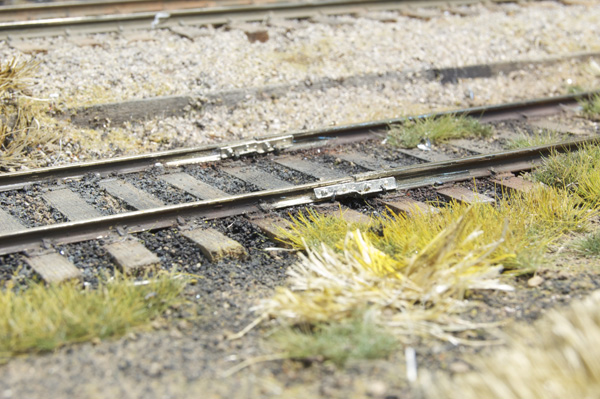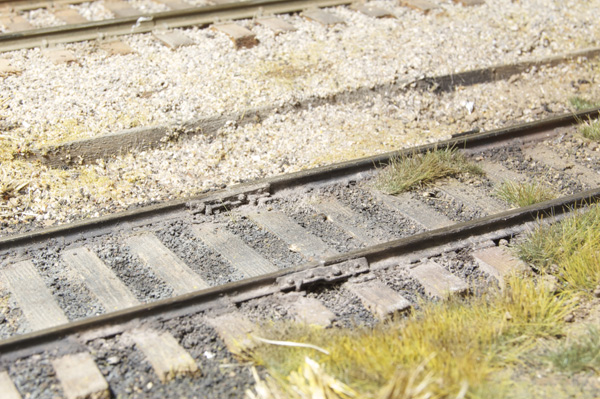Compromise joint bars, like this prototype example on the former GR&I in Richmond IN, are used to connect to different size and weights of rail. Until recently modelers had to make do with bits of plastic or nothing at all. The typical solution is to take an ordinary slip-on rail joiner and flatten one half of it. then solder the smaller of the two rail sizes to the flattened portion for a mechanical and electrical connection. It works, it’s pragmatic and it’s ugly.
I had a joint on the Pole Track between codes 125 and 100 rail right at the front of the layout, where I soldered the two together; painted and weathered it and moved on. I bought some of John Pautz’s new compromise joint bars and decided they weren’t doing any good in the bag.
Installing them required cleaning up the solder on the rail joint, so the contoured bars would fit properly. Both rails have electrical feed wires, so no conductivity was lost from broken solder. The bars are right and left handed to fit both sides of the rail and look great, even when one does a lousy job of installing them like I’ve done here.
Painted and weathered they blend in nicely and add that extra touch of realism. AS&S continues to bring outstanding products to market that make accurate track modeling a joy. Check out the line on the Protocraft website. www.protocraft.com
Regards,
Mike




Hi Mike,
I’m glad John produced these jointbars. My transition point is between the switch on the main line and the switch leading to the coal trestle. And you are right on, they are good looking.
Chester
Hi Chester,
Couldn’t agree more. Without folks like John and many others, this scale wouldn’t be nearly as much fun as it is now. We owe them all a debt of gratitude for their efforts to improve things.
Mike
Amen!
Dear Mike:
Thank you for this post, which inspired me to return to your Detailing Track book which constantly reinforces the importance of viewing track as part of the model.
For many years, I’ve often wondered about the disconnect between the trackage we run our trains on and the trackage we encounter in our everyday travels.
Until I saw this post, I’ve been frustrated locations on my layout where code 125 turnouts met code 100 hand-laid track. This is the solution I’ve been looking for.
Roger
Hi Roger,
Glad it helped.
Mike